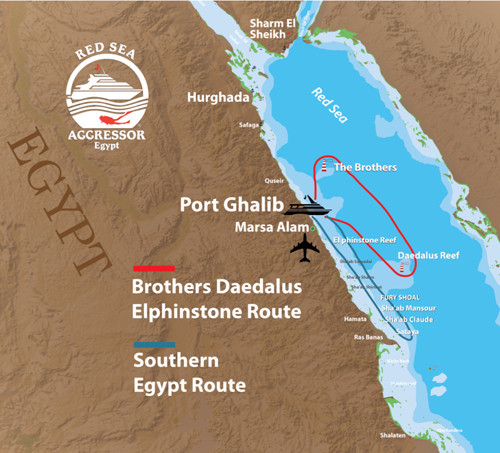RED SEA AGGRESSOR, EGYPT: Itinerary
"RED SEA" ITINERARY (The Northern Route) departing from Sharm El Sheikh
Sep., Oct., Nov., Dec., Jan., Feb., Mar., Apr. / 7-day, (6 days of diving), Sat. to Sat.
Day 1- Check-in noon, afternoon dives at light house & Ras Mohammed (Shark Reef),
night dive at Shoaab Mahmoud
Day 2- Wreck of Dunraven, Shoab Sourour, Shag Rock, night dive at Shoaab Ali
Day 3- 3 dives at Wreck of Thistlegorm, night dive at Gobal Island
Day 4- The Abu Nuhas wrecks: Giannis D., Carnatic & Chrisoula K.
Day 5- Ras Mohammed (Anemone City, Shark Observatory & Ras Attar) night dive at Tempel
Day 6- Straits of Tiran (Jackson Reef, Wood House, night dive South lagona)
Day 7- Morning dives at Tomas Reef & Gordon Reef. Check-out noon.
"ISLANDS" ITINERARY (The Southern Route) departs from Hurghada
May, June, July & August 10 days / (9 days of diving) Sat. to Tues.
Dives the Brothers, "Abu El Kizan/Daedalus Reef," Zabargad, & Rocky Island.
On the way back north to Hurghada, dives are made along the coast.
All Red Sea Aggressor photos © Copyright Aggressor Fleet.

